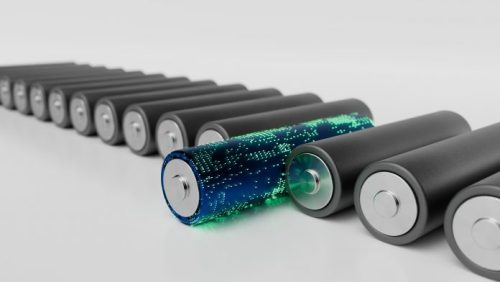The cathode materials of lithium-ion batteries are mainly metal oxides. Common cathode materials include:
1. Lithium cobalt oxide (LiCoO2): Lithium cobalt oxide is one of the earliest cathode materials used in commercial lithium-ion batteries, with high energy density and good cycle life. However, the price of lithium cobalt oxide is high and there are problems with resource supply.
2. Lithium manganese oxide (LiMn2O4): Lithium manganese oxide is a relatively cheap cathode material with high safety and good cycle life. However, lithium manganese oxide has low energy density and relatively small capacity.
3. Lithium nickel oxide (LiNiO2): Lithium nickel oxide has high energy density and good cycle life, but its stability is poor and it is prone to thermal runaway reactions. Therefore, lithium nickel oxide is usually mixed with other metal oxides to improve its safety.
4. Lithium iron phosphate (LiFePO4) is a common cathode material for lithium-ion batteries with the following characteristics: High safety: Compared with other cathode materials, lithium iron phosphate has better thermal stability and safety, is not prone to thermal runaway reactions, and reduces the risk of fire and explosion of batteries. Long cycle life: Lithium iron phosphate batteries have a long cycle life and can be charged and discharged for thousands of times, maintaining high capacity and performance stability. High temperature performance: Lithium iron phosphate batteries show good stability in high temperature environments, are not prone to thermal runaway reactions, and are suitable for high temperature areas and high temperature working environments. Higher discharge platform voltage: The discharge platform voltage of lithium iron phosphate batteries is relatively high, stable at around 3.2V, and can provide relatively high power output. Lower energy density: Compared with other positive electrode materials, lithium iron phosphate has a lower energy density and a relatively small capacity, requiring a larger volume and weight to store the same energy. Lithium iron phosphate batteries are mainly used in electric vehicles, energy storage systems, power tools and other fields, and are particularly suitable for application scenarios with high requirements for safety and cycle life. In recent years, with the continuous improvement of technology, the energy density of lithium iron phosphate batteries has also been gradually improved, and it is expected to expand its application range.
5. Ternary materials: Inspired by the metal element doping modification of lithium cobalt oxide, multi-metal composite oxides-ternary materials LiNi 1-x-y Co x N y O 2 (N=Mn, Al) have developed rapidly. Ternary materials combine the advantages of lithium cobalt oxide, lithium nickel oxide and lithium manganese oxide (lithium aluminum oxide) to form a ternary co-solvent, which can give full play to the role of the three components. It has a high theoretical capacity and a relatively balanced property, and occupies an important position in the power battery market.
In addition to the above common metal oxide positive electrode materials, there are some new positive electrode materials under research and development, such as modified materials of lithium cobalt oxide, modified materials of lithium manganese oxide, titanium oxide, vanadium oxide, etc. These materials have higher energy density, longer cycle life and better safety performance, and are expected to further promote the development of lithium-ion batteries.


